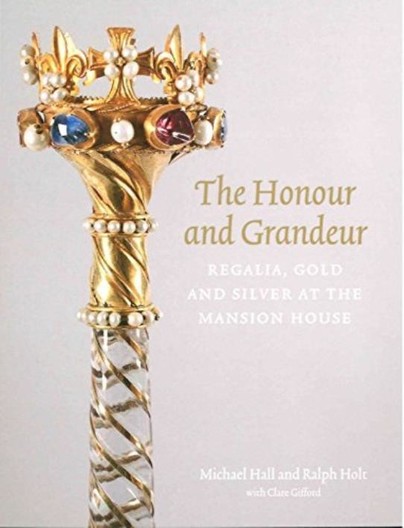
Format: Paperback
Pages: 200
ISBN: 9781907372896
Pub Date: 31 Oct 2015
Imprint: Sam Fogg
Illustrations: 100 colour illus.
Description:
The greatest treasure of the City of London has been, until now, the least known. The unique Crystal Sceptre of c.1420 - seen only at the inauguration of the Lord Mayor and at coronations, and never photographed before - is here presented with as much as is known of its history, its materials and their origins and its first recorded outing, to the coronation of Catherine of Valois, the wife of King Henry V, in 1421 at Westminster Abbey.
Timed to coinicide with the first ever public exhibition of the Crystal Sceptre, which opens on the occasion of the 600-year anniversary of the Battle of Agincourt, this new book will present the Sceptre and over 80 of the finest and most historic pieces in the plate collection at Mansion House - the home, office and centre of entertainment for the Lord Mayor of the City of London. The regalia includes several famous items, notably the 16th-century gold and enamel Chain of Esses, the great Mace of 1735-36 and the Pearl Sword of the 1570s, carried by the Lord Mayor before the Sovereign on visits to the City. The silver-gilt and silver, used constantly during the year, includes pieces by some of the greatest names of English silversmithing - Paul de Lamerie and Paul Storr, for example - but also rare ones by more modern masters - Latino Movio and Omar Ramsden - including masterpieces previously completely unknown to silver historians. An inscription on a silver-gilt cup presented to the Lord Mayor in 1741 records that the intention of the gift was to increas - the Honour and Grandeur - of the City of London. It is just one piece of a vast, eclectic and exceptional collection of plate, which is constantly in use at the Guildhall and Mansion House today to uphold that honour and in the grandest way possible - a rare survival of medieval practices of display. The quality and quantity of the 19th- and 20th-century pieces in particular is extraordinary. This volume is the third in the series on the treasures of Mansion House, following The Harold Samuel Collection of Dutch and Flemish Paintings (2012) and Magnificent Marble Statutes: A Guide to the Sculpture at the Mansion House (2013). Intended to introduce to a broad audience the plate collection - as well as the history of the Lord Mayors, the City guilds and Mansion House itself, and the formation of the collection, it will also be of interest to specialists in silver, who will discover many masterpieces of style and technique.

Format: Paperback
Pages: 225
ISBN: 9781626430280
Pub Date: 30 Oct 2015
Description:
Jia Zhangke Speaks Out is a collection of writings by China's most acclaimed film director, Jia Zhangke. The book, originally published in 2009 by Peking University Press, contains Jia's selections of his own writings on film. While he has given numerous film-specific interviews throughout the years, his own notes on cinema, on his own production, and on Chinese culture are unknown to non-Chinese readers.
This collection gives access to the key scenes of his life, films, and meetings with other filmmakers, from Hou Hsiao-hsien to Martin Scorsese. From his point of view, we get an insightful and profoundly original take on China's film history, its ruptures and failings, as well as on the post-Tiananmen filmmaking industry, with its blockbusters on one side and indie films (like his) on the other.
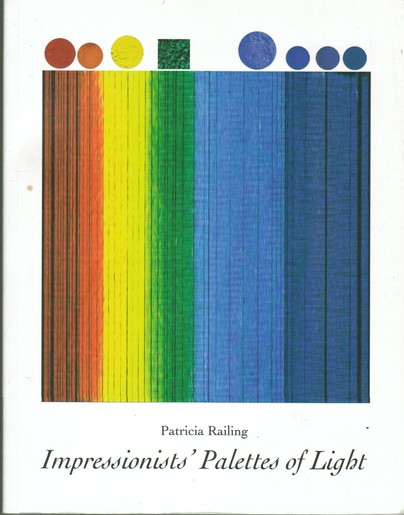
Format: Paperback
Pages: 68
ISBN: 9780946311002
Pub Date: 01 Oct 2015
Illustrations: 12 colour plates
Description:
The French Impressionist painters discovered new means for painting light – they used a “solar palette”, the pigments matched to the colours the eyes see. They are the colours of a ray of light. This little book reproduces palettes by 8 of the plein-air painters – Cézanne, Manet, Monet, Pissarro, Renoir, Seurat, Signac, and Van Gogh.
It describes the pigments they used, and includes short excerpts by the scientists whose work was the foundation of the new painting – complementary colours, optical mixing, and the pigment-colour correspondences.
The British Museum Citole
New Perspectives
Format: Paperback
Pages: 176
ISBN: 9780861591862
Pub Date: 30 Sep 2015
Series: British Museum Research Publications
Description:
The British Museum citole is a unique example of medieval craftsmanship and is one of very few surviving instruments from the Middle Ages. This new publication includes selected papers from the first international symposium on the British Museum citole, held in November 2010 to highlight recent new research, conservation work and scientific findings related to the British Museum citole. Highly illustrated to reflect the visual richness of this beautiful instrument, The British Museum Citole: New Perspectives features a wide range of academic approaches to the subject, drawing together experts from the fields of history, art history, music, organology, conservation and science and performance practice.

Format: Hardback
Pages: 80
ISBN: 9781938086311
Pub Date: 01 Sep 2015
Description:
Near the homes of photographers John Willis and Tom Young is a paper mill that sits in the otherwise pristine and picturesque climes of western Massachusetts. For Willis and Young, this site is one of both aesthetic and philosophical contradictions: despite its verdant locale, the mill—with its smokestacks and countless bales of discarded paper—brings to mind the dreariness of industrialization and the impermanence of life itself. But the factory is actually one where such litter is reborn as reusable paper.
Willis and Young’s quadtone photographs transform this mill and the innumerable mounds of recyclable waste it processes daily into an indelible and evocative landscape. Recycled Realities is not a jeremiad foretelling the consequences of excessive waste, rampant pollution, or unbridled consumption but rather a profound meditation on the hidden connections and meanings that linger beneath the debris and detritus of everyday life. These unforgettable images of discarded paper from the printed world trace the processes of emergence, revelation, and redemption that make the cycle of life possible.

Format: Paperback
Pages: 262
ISBN: 9781907372797
Pub Date: 10 Aug 2015
Illustrations: 300 colour
Description:
Anyone writing about a work of art needs to establish at the outset how much it has changed since it was first made. This simple, informative and pracrical book, full of fascinating and revelatory photography, will take the reader through both the techniques and media of art and the techniques and media of its investigation and restoration.

Format: Paperback
Pages: 150
ISBN: 9780993033902
Pub Date: 31 Jul 2015
Imprint: Guy Points
Illustrations: 25 Black & White Illustrations 148 Colour Photographs
Description:
The aim of this book is to provide an informed introduction to the subjects so that the reader will be able to confidently recognise Anglo-Saxon church architectural features and Anglo-Saxon and Anglo-Scandinavian stone sculpture. The contents, including illustrations and photographs, all meticulously checked on site, are drawn from the author’s extensive research and travels over many years. Especially useful is the gazetteer section offering a selection of 127 sites providing excellent examples of the features described.

Format: Hardback
Pages: 328
ISBN: 9780813155678
Pub Date: 31 Jul 2015
Illustrations: 207 color photos
Description:
The Index of American Design was one of the most significant undertakings of the Federal Art Project -- the visual arts arm of the Works Progress Administration. Part of President Franklin D. Roosevelt's New Deal, this ambitious initiative set out to discover and document an authentic American style in everyday objects.
The curators of the Index combed the country for art of the machine age -- from carved carousel horses to engraved powder horns to woven coverlets -- created by artisans for practical use. In their search for a true American artistic identity, they also sought furniture designed by regional craftsmen laboring in isolation from European traditions. Kentucky by Design offers the first comprehensive examination of the objects from the Bluegrass State featured in this historic venture. It showcases a wide array of offerings, including architecture, furniture, ceramics, musical instruments, textiles, clothing, and glass- and metalworks. The Federal Art Project played an important role in documenting and preserving the work of Shaker artists from the Pleasant Hill and South Union communities, and their creations are exhibited in this illuminating catalog. Beautifully illustrated with both the original watercolor depictions and contemporary, art-quality photographs of the works, this book is a lavish exploration of the Commonwealth's distinctive contribution to American culture and modern design.Features contributions from Jean M. Burks, Erika Doss, Jerrold Hirsch, Lauren Churilla, Larrie Currie, Michelle Ganz, Tommy Hines, Lee Kogan, Ron Pen, Janet Rae, Shelly Zegart, Mel Hankla, Philippe Chavance, Kate Hesseldenz, Madeleine Burnside, and Allan Weiss.

Format: Paperback
Pages: 176
ISBN: 9781907372834
Pub Date: 31 Jul 2015
Illustrations: 10 colour illustrations
Description:
The first Europeans to follow the explorers of the eighteenth century into the South Pacific were missionaries. They were sent by an Evangelical Christian organization called The London Missionary Society, whose aim was to bring the word of the Bible to all peoples – “to illume a dark and sinful world”. Their first target was Tahiti, an island of extravagant beauty, inhabited by a people of astonishing sophistication.
The missionaries settled down, learned the language and stayed for decades. Although their aim was to Christianize the islanders and eradicate the traditional religion along with its pagan idols, they ended up recording a good deal about Polynesian culture and even saving a large number of the very idols they came 12,000 miles to destroy.Accompanying an exhibition at the University of London’s Brunei Gallery, this beautifully illustrated catalogue documents the London Missionary Society from its formation to its initial ‘success’ in Polynesia. The period covered spans roughly 1792 to 1825. Along with historical graphics and archive material – paintings, engravings, books, journals and correspondence of the missionaries – this publication shows some of the idols and artefacts that the missionaries brought back – feather gods and spirit images, necklaces, instruments and tools. In the words of missionary Rev. John Williams, it puts on view an historical “ocular demonstration” of The London Missionary Society. Most objects shown here have not been on public display since the nineteenth century.After the initial and very difficult spiritual conquest of Tahiti – the “night of toil” that took 15 years – the English missionaries turned the thorny job of Christianization over to Polynesian ‘teachers’, who, in the words of Rev. John Williams, knew how to clear away “the rubbish of idolatry & superstition far better than newly arrived or even Old Missionaries”. The best teacher of all was Papeiha, who was energetic, purposeful and a native speaker of Tahitian. His account of events while Christianizing Rarotonga – published here for the first time – is probably the most personal, immediate and detailed description of a conversion in the South Sea.Missionaries are roundly criticized for their unrelenting determination to alter traditional Polynesian religion and customs. In what they referred to as the “bloodless victory”, they largely succeeded. Yet in many ways Evangelicals were progressive. They were vehemently opposed to slavery, infanticide, human sacrifice and warfare. They brought writing, taught literacy, and printed books; in doing so they fi xed the Polynesian languages. They urged the elevation of women in Polynesian society. Unlike the American missionaries in Hawai’i, for example, their aim was to establish spiritual rather than territorial or economic dominion. However questionable the missionary endeavour, the writings and collections presented here show that the missionaries were also agents of cultural preservation.

Format: Paperback
Pages: 190
ISBN: 9781910221051
Pub Date: 30 Jul 2015
Illustrations: Approx. 60 b/w and colour
Description:
Nathan Coley is a publication documenting a public art project in London byGlasgow-based contemporary artist Nathan Coley (b.1967). At a time when housing and the property market are at the centre of much social, political and economic debate, Coley's project is a pertinent and thought-provoking exploration of issues of housing,ownership, history and activism.
In the mid-late 1960s, the Greater London Council moved local authority tenants out of their run-down terraced houses in the Freston Road area of the Royal Borough of Kensington and Chelsea and into newly built blocks of flats nearby. The council was planning to knock down the terraced houses and to regenerate the area, but the plans were beset by delays so the houses lay derelict for almost a decade. During the 1970s agroup of squatters began moving into the old houses – there were around 150 people living in 35 houses at one point towards the end of the decade.In late summer 2015, on the site where Frestonia once stood, the first phase of apartments designed byHaworth Tompkins Architects and built by the charitableorganisation The Peabody Trust was completed. With one third of the properties for sale, one third for rent, and one third under the management of the Housing Association, the complex, called The Silchester (More West) development, consists of 112 apartments. Nathan Coley was commissioned to make new artwork for the site. Based on the form of an apple tree – inspired by the history of the Bramley apple that gave its name to the Frestonia residents – Coley has not only made a striking steel and gold leaf rooftop sculpture, but also 112 small versions of the same sculpture that have been given to each of the residents as a house warming present. In doing so, Coley not only connects the new housing complex and its residents with its local history, but to wider discourses of modernism and sculpture, art and society, capitalism and alternative modes of living. The publication, which forms part of the artist's commissioned project, presents a variety of texts, images and documentation relating to the new housing development, to the history of the Bramley apple and to Frestonia – including a selection of archive photographs of Frestonia taken by former resident Tony Sleep.
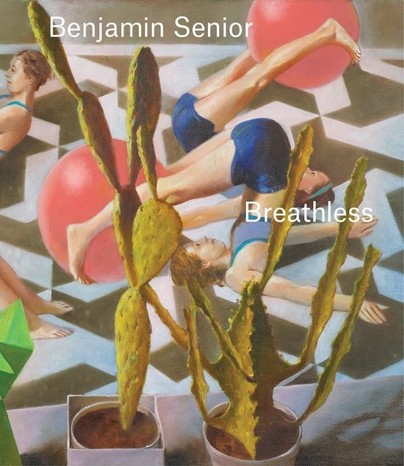
Format: Hardback
Pages: 100
ISBN: 9781910221068
Pub Date: 09 Jul 2015
Illustrations: Approx. 60 colour
Description:
‘Breathless’ is the first monograph on the emerging British painter Benjamin Senior. His paintings conjure up a world that is delightful, curious, quirky, and distinctly his own. It is a world in which bathers lounge around pools and swimmers limber up before finally diving in; where we find people doing yoga and various exercise routines both indoors and out; where walkers and joggers take us out into the countryside, or into the city with their dogs.
These physical activities – both leisure and sporting – would undoubtedly leave some of their protagonists out of breath, as the title of the monograph suggests, and may well inspire some viewers to shake off any lethargy and get physical too.But despite their clear iconography and endorphin-rousing semiotics, Senior’s paintings are no mere campaign to get, or to keep, art lovers fit and healthy. For they are also carefully conceived and meticulously executed studies of the human body, of shape, line and form, of colour, tone, light and shadow. They are engaging explorations of composition and colour, pattern and geometry, textures and materials, the natural and the manmade. This interplay between the natural and synthetic is played out in surprising juxtapositions, such as blue rubber exercise balls in dialogue with various-sized cacti, or between the materials and designs of sports clothing in contrast to the rolling hills of a spring landscape, or to autumnal trees at sunset. There are many other intriguing tropes, devices and recurring motifs within Senior’s repertoire, from cast iron grilles to unorthodox hats and hairstyles, perhaps leading his stylised vocabulary into the realms of nineteenth-century symbolist painting as much as into the health clubs, spas, leisure centres and parks of today. Indeed, there is a strange sense of timelessness to Senior’s practice that is matched by a captivating sense of silence, loneliness and isolation, despite the figures often being present in couples, clusters or small groups. Behind their toned physiques, stripy towels and goggles, underneath their winter coats, cagoules and peaked caps, there are, perhaps, some small glimmers of inner lives – of sentient, intellectual, cultured, emotional, sexual beings trapped within. Senior’s oeuvre is, in many ways, preoccupied with repression and expression, freedom and conformity, motion and stasis, balance and inertia, engagement and disengagement. One might even describe it as a bittersweet analogy of the human body for human states of mind, for energy versus futility, effort versus relaxation, health versus decline. Benjamin Senior completed a BA in painting at Wimbledon School of Art before graduating with an MA in painting from the Royal College of Art in 2010. Recent solo exhibitions include at Grey Noise, Dubai, Studio Voltaire, London, Galleria Monica de Cardenas, Milan, James Fuentes, New York, and BolteLang, Zurich.Featuring an introduction by art critic, writer and curator Sacha Craddock, an essay by art historian, museum educator and writer Ben Street, and a text by curator, writer and lecturer Gabor Gyory, this 100-page hardback monograph has been designed by Joe Gilmore / Qubik, edited by Matt Price and published by Anomie.

Format: Paperback
Pages: 72
ISBN: 9781907372841
Pub Date: 30 Jun 2015
Description:
Jonathan Richardson (1667–1745) was one of 18th-century England’s most significant cultural figures. A leading portrait painter and influential art theorist, he also amassed one of the period’s greatest collections of drawings. But there was another, highly unusual dimension to his pursuits.
In 1728, at the age of 61 and shortly before his retirement from professional life, Richardson began to create a remarkable series of self-portrait drawings. Not intended for public display, these works were unguarded explorations of his own character. In one of the most astonishing projects of self-examination ever undertaken by an artist, for over a decade Richardson repeatedly drew his own face. His self-portrait drawings are usually dated precisely, and they document, from month to month, his changing state of mind as much as his appearance. Many were drawn in chalks on large sheets of blue paper, from his reflection in the mirror. Some of these are bold and psychologically penetrating, while others, in which he regards his ageing features with gentle but unflinching scrutiny, are deeply touching. A further group of self-portraits is drawn with graphite on small sheets of fine vellum, and in these Richardson often presents himself in inventive and humorous ways, such as in profile, all’antica, as though on the face of a coin or medal; or crowned with bays, like a celebrated poet. Sometimes, too, he copies his image from oil paintings made decades earlier, in order to recall his appearance as a younger man. In this extraordinary series of self-portraits, Richardson offers a candid insight into his mind and personality. Together, these drawings create nothing less than a unique and compelling visual autobiography. This publication – which accompanies the first ever exhibition devoted to Richardson’s self-portrait drawings, held in the new Gilbert and Ildiko Butler Drawings Gallery at the Courtauld – tells the story of these remarkable works
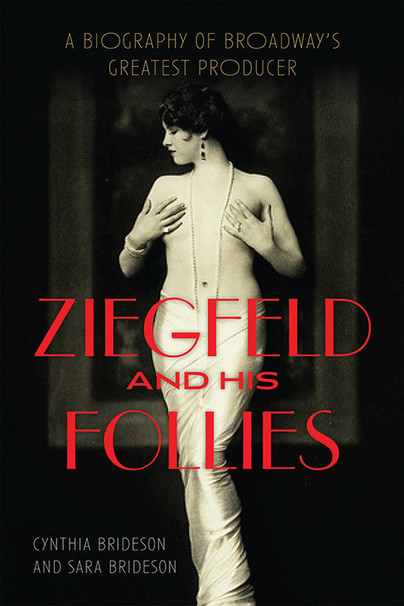
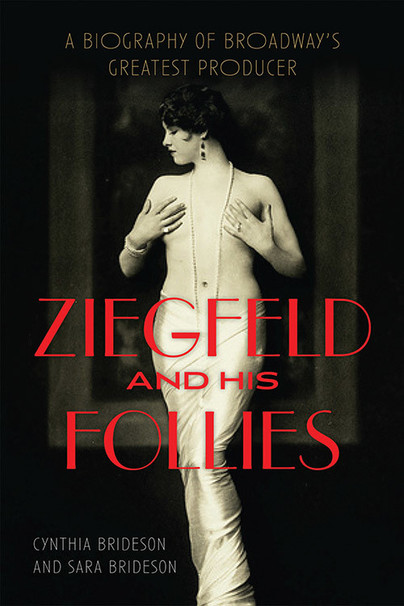
Pages: 576
ISBN: 9780813160887
Pub Date: 23 Jun 2015
Illustrations: 76 b&w photos
Pages: 576
ISBN: 9780813175027
Pub Date: 27 Apr 2018
Illustrations: 76 b&w photos
Description:
The name Florenz Ziegfeld Jr. (1867--1932) is synonymous with the decadent revues that the legendary impresario produced at the turn of the twentieth century. These extravagant performances were filled with catchy tunes, high-kicking chorus girls, striking costumes, and talented stars such as Eddie Cantor, Fanny Brice, Marilyn Miller, W.
C. Fields, and Will Rogers. After the success of his Follies, Ziegfeld revolutionized theater performance with the musical Show Boat (1927) and continued making Broadway hits -- including Sally (1920), Rio Rita (1927), and The Three Musketeers (1928) -- several of which were adapted for the silver screen.In this definitive biography, authors Cynthia Brideson and Sara Brideson offer a comprehensive look at both the life and legacy of the famous producer. Drawing on a wide range of sources -- including Ziegfield's previously unpublished letters to his second wife, Billie Burke (who later played Glinda the Good Witch in The Wizard of Oz), and to his daughter Patricia -- the Bridesons shed new light on this enigmatic man. They provide a lively and well-rounded account of Ziegfeld as a father, a husband, a son, a friend, a lover, and an alternately ruthless and benevolent employer. Lavishly illustrated with over seventy-five images, this meticulously researched book presents an intimate and in-depth portrait of a figure who profoundly changed American entertainment.

Format: Hardback
Pages: 250
ISBN: 9781861543592
Pub Date: 18 Jun 2015
Description:
In his new book, DEAD, A Celebration of Mortality, Charles Saatchi confronts the inescapable subject of death, decay and mortality in a series of perversely entertaining essays written in his characteristically dry, sardonic and amusing style . The 52 essays span a wide variety of topics; the Russian mafia, snake eating spiders, Attila the Hun, The Wild West, being run over by your own dog , the most effective poisons, fatal curses, near- death experiences, premature burials, snuff movies and lethal sex.

Format: Hardback
Pages: 216
ISBN: 9781910221044
Pub Date: 18 Jun 2015
Illustrations: Approx. 15 b/w and colour
Description:
‘Three Books’ by Tamara Tracz is a very special three-hardback-volume slipcased book. It is, first and foremost, a story that follows several generations of a family as their lives unfold in various cities, countries and continents during the course of the twentieth century. It is a story with a cast of characters, some strong, some exceptional, some familiar, some curious.
It is a story of births and deaths, of lives led and of the forces that shape them.The family in ‘Three Books’ is a Jewish Family, and their story is one of emigration and persecution that was, almost inescapably, profoundly affected by the Holocaust. It is a story that is shared with the stories of many countless thousands of other families – of taking flight from the Nazi regime, of German forces arriving in towns and villages and searching out the Jewish inhabitants, of summary executions and mass graves. It is a story of branches of the family destroyed, and of the survival of others. It is as distressing, disillusioning and disheartening a story as one might fear to read of the plight of the Jews last century.But ‘Three Books’ is not written in the usual form of family biography, and is not only the story of this family’s history. It is also a story about stories, about the passing on of information between generations, and between different branches of a family over time. It is a story about the impossibility of ever being able to tell a complete or truly objective family history. It is a story of fragments and recollections, of oral histories and letters sent, of trying to piece things together and to fill in gaps. Perhaps just as importantly, it acknowledges the absence of information, or the chances of ever being able to know certain things that transpired, and how this can shape the directions of subsequent generations. The dark, gaping holes of knowledge were often deliberately left unspoken by those who were once in a position to reveal the details.‘Three Books’ is also partly autobiography, as it is Tracz’s own family that is the subject of the story. Indeed, the reader can glean much about the author’s life as Tracz consciously lets us in to her immediate family circle, to their happy family life today. With a particular focus on her young children, Riva and Constantin, Tracz gently shares her inner fears and anxieties about being a mother, of the thought of losing her children. These are the thoughts of almost any mother, especially any mother who has heard the stories of mothers, daughters and sisters in her own family’s past who experienced such separations and losses through oppression and genocide. It is, in many ways, a story of women, of female intergenerational relations, experiences, actions, thoughts and emotions. It is a story about living and loving, of family and the meaning of the things that happen to them, the things that remain and that the things that slip away.But while Tracz is in some respects every woman, every mother and every daughter – and a Jewish woman in particular – she is also, quite inimitably and indubitably, Tamara Tracz. A unique, remarkable and inspiring person, a writer, filmmaker and artist based in London, she does things in ways that perhaps only she can. For every word in this book has been handwritten, and reproduced as she planned, designed and drew it. The text does not, therefore, flow as regular lines and pages, but in all manner of configurations and arrangements, systems and patterns, and in such a way as to enhance the meaning of the text – or rather to emphasise the mind’s reading of the text just as the sound effects or ambient sound might for a film, or the drama and nuances of the voice add when reading a story aloud. As such, ‘Three Books’ is a form of artist’s book, a creative work that sits at the interface of non-fiction and radical typesetting experimentation. Designed in collaboration with Herman Lelie, and beautifully produced in Verona, Italy, ‘Three Books’ is a story, a journey and an experience that is not easily forgotten.
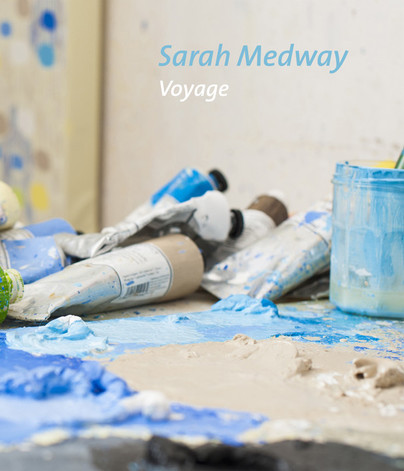
Format: Paperback
Pages: 112
ISBN: 9781910221082
Pub Date: 11 Jun 2015
Illustrations: Approx. 75 colour
Description:
Sarah Medway’s abstract paintings are a delicate, evocative and sincere investigation into the nature of light as it manifests itself through the myriad environments that surround us. She navigates us through the different seasons, sometimes on foreign shores – from the Mediterranean to Scandinavia and beyond – other times closer to her canal-side studio in central London. She leads us through different times of day and night, from dawn to dusk and long into the night.
She takes us up to the skies, into sunlight and shade, clouds and fog, rainbows and sunsets. She takes us into fields, along the coastline, and far out to sea. With her distinctive vocabulary of abstract marks and shimmering palettes, her works build into complex webs of patterns and textures that capture something of the experience of perceiving light, colour and shapes as they filter through the atmosphere into our eyes, minds, memories and subconscious.That Medway’s works take us on different journeys, into different environments and out to sea is certainly apt, as the body of work presented in this latest monograph on the artist takes the form of 56 canvases that were commissioned for display on the new P&O Cruises Britannia, the largest and highest-specification cruise ship built by the company to date, making regular voyages into the Med, to the Fjords, to the Canaries, the Caribbean and beyond. This substantial commission is one of the latest in a long line of commissions by P&O of original works of art by living artists. For the publication, specially commissioned texts by eminent art critics Andrew Lambirth and Sue Hubbard offer an illuminating and insightful introduction to Medway’s oeuvre and to this significant new series of paintings. In addition to having participated in group exhibitions at institutions including Tate Britain, the Whitechapel, the Royal Academy, the World Trade Center and Austin Museum of Art, Medway has had solo exhibitions at venues including Flowers East, London, Chelsea Hotel, New York, Kienbaum Gallery, Frankfurt, The Mandalai, Thailand, and Atelier Gallery, Spain. She has works in many public, private and corporate collections in the UK, US, Germany, Italy, Spain, Belgium, Hong Kong and Thailand. Published by Anomie, the monograph has been designed by Peter B. Willberg with James Sutton, and printed in Italy by Castelli Bolis.

















